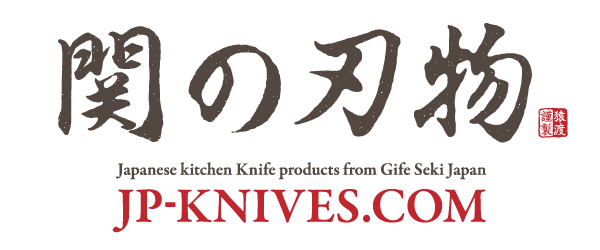
Seki City is a small city in Gifu Prefecture, Central Japan. Because of its long association with high quality Japanese knives, it is known today as 'The City of Blades'. Seki's reputation for quality, established over 700 years of manufacturing, is why Seki City knives are now prized all over the world.
The tradition of bladesmithing in Seki begins with the sword, and is said to have been founded around the 13th century by a smith from Kyushu named Motoshige. Like the many smiths who came after him, Motoshige favoured Seki for its access to clear rivers and rich pine forests. Clean water and abundant charcoal were both essential to the smithing process, particularly in this era when laborious techniques had to compensate for relatively impure steel.

Another famous figure in Seki's history is Kinju (also known as Kaneshige). After the exodus of craftsmen from Kamakura following the fall of the shogunate in 1333, a new wave of distinctive regional swordsmithing styles began to flourish. Kinju, together with another smith named Kaneuji, is credited with developing the famous Mino style, named for the historical province which largely overlaps modern Gifu Prefecture. In recognition of their individual mastery, Kinju and Kaneuji are counted among the Ten Great Disciples of Masamune, the quasi-legendary swordsmith of the late Kamakura period who trained many smiths of that generation. This is no small honour, since a number of blades signed by or attributed to Masamune are now designated Japanese National Treasures.

In modern times, there is no call for the sword as a functional object. In 1876, the 9th year of the Meiji era, it in fact became illegal for the majority of people in Japan to carry weapons in public. This was part of an effort by the Meiji government to remove the privileges of the old samurai class and bring about a wholesale modernization of Japanese society. Although the age of sword is long since over, antique blades live on in museums and popular imagination as the highest expressions of Japanese culture and craftsmanship. Rather than fade into obscurity, old centres of swordsmithing such as Seki have moved with the times. Whereas once their main trade was in deadly weapons, their attention and expertise are today mostly dedicated to the perfection of kitchen knives, scissors and other household implements.
Home to a number of top cutlery manufacturers, Seki City is a place where traditional craftsmanship is combined with the finest modern design and materials. The city takes great pride in its nickname, 'The City of Blades'. This pride is not lost on visitors to Seki, who can enjoy smithing demonstrations at the Seki Traditional Swordsmith Museum and find great deals on high quality Japanese knives at the annual Seki Cutlery Festival.

On November 8th, Seki City holds a hamono kuyo-sai or 'cutlery memorial service'. Around 40,000 domestic blades which have reached the end of their useful lives are collected for this service each year. In an expression of gratitude for the role these objects play in our daily lives, a Shinto ceremony is performed over the blades before they are finally recycled into new forms. This goes to show the respect that Seki City residents have for their knives and the spiritual connection to the manufacture and use of blades which can be traced back through the history of Japanese culture.
When you purchase a Seki City knife from us, you receive not only a top quality kitchen knife, but also a piece of a proud Japanese tradition. Thanks to the passion and expertise of our manufacturers, Seki's ancient swordsmithing heritage lives on in a modern incarnation which you can use and enjoy every day.
